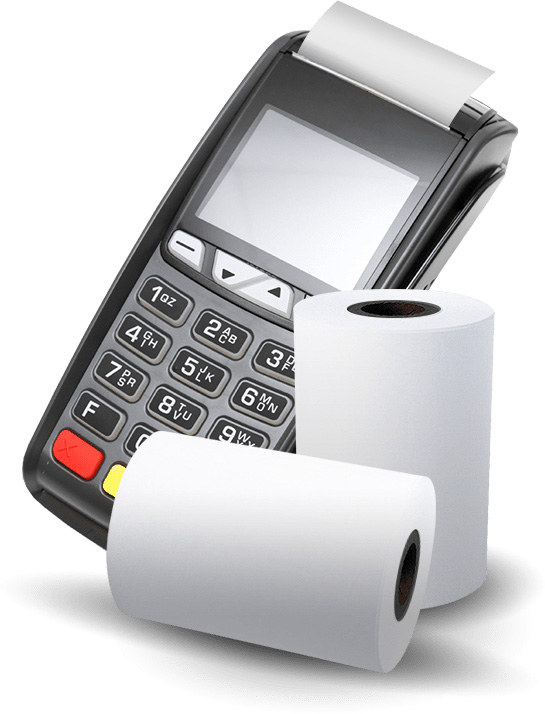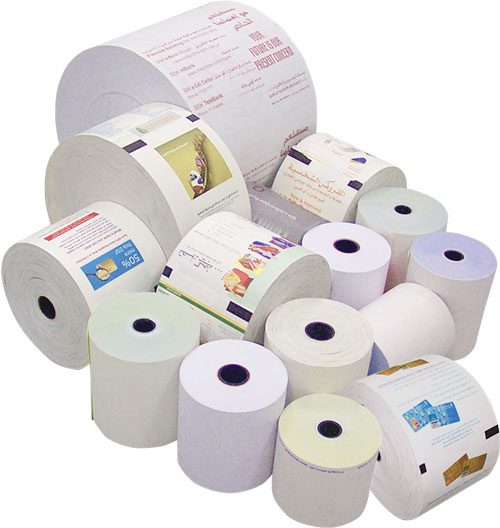The Essential Guide to BPA-Free Thermal Paper Solutions

There are many industries in which thermal paper is a staple; from retail and hospitality to healthcare and logistics. The increased awareness of the potential health and environmental risks of Bisphenol A (BPA) has spurred demand for Bisphenol A (BPA) free thermal paper. What is BPA free thermal paper, and why is it important? What you need to know about this essential product is here.
What is BPA and Why Does It Matter?
Bisphenol A (BPA) is a chemical compound that is used in the production of plastics and resins. BPA has been used traditionally as a color developer for thermal paper, reacting with the heat sensitive coating to produce text and images. BPA is an endocrine disruptor, which means it can disrupt your body’s hormones. Studies have linked BPA exposure to a range of health concerns, including:
- Hormonal imbalances
- Reproductive issues
- Risk of certain cancers increased.
- Effects in children, behavioral and developmental
Because of these risks, regulatory bodies in the world over have imposed stricter limits on BPA use. The European Union banned BPA from thermal paper in 2020 and other countries have followed.

What Makes BPA-Free Thermal Paper Different?
Thermal paper that is BPA free utilizes different chemicals to get the same heat sensitive functionality. These substitues include Bisphenol S (BPS) or phenol free developer like Pergafast 201 so that the paper remains safe for user and environment.
- Health Benefits: Thermal paper with no direct exposure to potentially harmful chemicals is BPA free, therefore it is safer for people who handle receipts daily, like cashiers and healthcare workers.
- Environmental Impact: Recycling is less risky, and, in general, eco-friendlier, when the containers are BPA free.

Types of BPA-Free Thermal Paper
- BPS-Based Thermal Paper
An alternative to BPA is BPS (Bisphenol S). It does the same thing, but it's not without its safety concerns — some studies have shown it may also upset hormonal systems. However, BPS is used widely in many countries. - Phenol-Free Thermal Paper
This type does away with BPA and BPS, using non phenolic chemicals such as Pergafast 201. Today, the safest and most sustainable option on the market is phenol free paper.
Advantages of Switching to BPA-Free Thermal Paper
- Regulatory Compliance
By adopting BPA free thermal paper, companies are avoiding the risk of being sued and subject to financial penalties for not complying with global regulations. - Improved Workplace Safety
Switching to BPA-free is a way for businesses where employees handle receipts often to show their commitment to employee health and well being. - Trust and Brand Reputation of Consumer
Today’s consumers are more aware of environmental and health impact. BPA free thermal paper can help a brand to gain a reputation for being socially responsible. - Sustainability Goals
Green initiatives are aligned with many BPA free alternatives, and they are a better choice for companies that are trying to minimize its environmental footprint.
How to Identify BPA-Free Thermal Paper
When purchasing thermal paper, look for the following indicators to ensure it is BPA-free:
- Labeling: Many manufacturers who sell reputable products also clearly label their products as “BPA free.”
- Certifications: Make sure that you are compliant with standards like the European Union’s REACH regulation or RoHS (Restriction of Hazardous Substances).
- Material Safety Data Sheet (MSDS): This document gives all the details about the chemical composition of the paper.
Challenges and Considerations
While BPA-free thermal paper is a step forward, it is not without challenges:
- Cost: The alternative chemicals and advanced manufacturing processes used to make BPA-free paper make it more expensive.
- Performance Variations: BPA-free thermal paper is reported by some users to print slightly differently than traditional thermal paper and to be slightly less durable.
- Supply Chain Adjustments: This means that businesses will need to vet new suppliers and might have to adjust their purchasing processes to source BPA free options.
Applications of BPA-Free Thermal Paper
BPA-free thermal paper is versatile and widely used across industries, including:
- Retail: For point of sale receipts and transaction records.
- Healthcare: Like ECG machines and prescription labels in medical devices.
- Hospitality: For invoices, tickets and reservation confirmations.
- Logistics: In shipping labels and shipping documentation.
The Future of Thermal Paper
The thermal paper industry is changing as sustainability and health concerns continue to drive consumer and regulatory demands. Further work is underway to develop even safer and more eco-friendly alternatives, and promising innovations that may further increase the safety and environmental impact of thermal paper.
Conclusion
It’s no longer just a choice switching to BPA free thermal paper is becoming a necessity for businesses that want to comply with regulations, protect their employees and customers, and keep to sustainable practices. With this understanding of the benefits, challenges and options available, companies will have more informed decisions about the course they want to take, in line with their goals and values.
Whether you’re a small business or a multinational corporation, investing in BPA-free thermal paper is an investment in a healthier and more sustainable future. At Top Roll Paper, we specialize in offering top quality, BPA free solutions to your needs. Interested? Contact us today!



